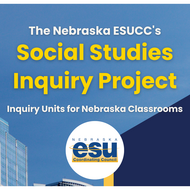Beautiful Nebraska
(View Complete Item Description)Is Nebraska really beautiful? The Nebraska unit explores the state's diverse geography, including its plains, rivers, and unique landscapes like the Sandhills. It delves into Nebraska's rich cultural heritage, from its pioneer history to contemporary arts and traditions, while also examining the impact of human activities on the state's environment and beauty. Resource created by Lucas Spooner, Winnebago Public Schools, as part of the Nebraska ESUCC Social Studies Special Projects 2024 - Inquiry Design Model (IDM).
Material Type: Unit of Study




















